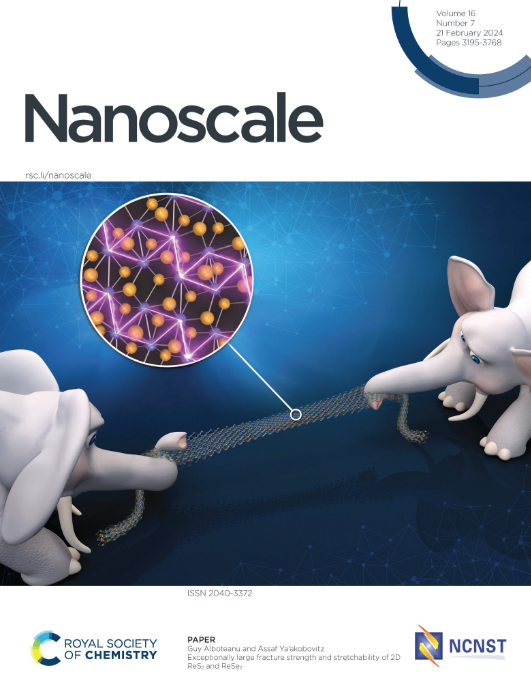Liposome: a tool to raise the Cherenkov Radiation yield and to restore fluorophore properties in aqueous media
IF 5.8
3区 材料科学
Q1 CHEMISTRY, MULTIDISCIPLINARY
引用次数: 0
Abstract
Liposomes used for the study were prepared and carefully characterized multiple times until all batches indicated the same characterization data (DOPC/cholesterol derivative (1:1.15 mol%), 14 mg(DOPC)/mL, dDLS = 130 nm, 2x1011 liposome/nm3of prepared batch, polydispersity index PDI = 0.1). The study shows that such a liposome suspension raises the yield in Cherenkov Radiation (CR) by 1.6-fold when in presence of [68Ga]-GaCl3, an efficient CR emitter (beta particle energy E = 1800 KeV). Also, liposomes were found to prevent aggregation of a water-soluble phthalocyanine-pyranine PcPy4 dyad upon encapsulation, leading to its spectacular fluorescence restoration. Altogether, upon efficient 68Ga-radiolabelling of NODAGA-chelate immobilized at the liposome surface (99% radiolabelling yield, radio-TLC showed) encapsulating PcPy4 dyad (Caverage = 97 M, Clumen = 300 M), subsequent Cherenkov Radiation Energy Transfer (CRET) at the dyad antenna occurred. Internal energy transfers and fluorescence emission from the emitter dyad led to a 2.6-fold raise in radiance measured in the near-infrared (NIR) window (i.e. ca 400 nm pseudo-Stokes shift). A similar raise in radiance was measured in the green window when encapsulation was achieved with eosin at the same rate. Liposome were found to be stable in PBS over 7 days regardless of the encapsulated fluorophore (no raise in dDLS diameter, no release of encapsulated dyes measured after Sephadex and FPLC repurification sequence), with some decay over 22 hours in a PBS/fetal calf serum mixture (1:1 vol.).求助全文
约1分钟内获得全文
求助全文
来源期刊

Nanoscale
CHEMISTRY, MULTIDISCIPLINARY-NANOSCIENCE & NANOTECHNOLOGY
CiteScore
12.10
自引率
3.00%
发文量
1628
审稿时长
1.6 months
期刊介绍:
Nanoscale is a high-impact international journal, publishing high-quality research across nanoscience and nanotechnology. Nanoscale publishes a full mix of research articles on experimental and theoretical work, including reviews, communications, and full papers.Highly interdisciplinary, this journal appeals to scientists, researchers and professionals interested in nanoscience and nanotechnology, quantum materials and quantum technology, including the areas of physics, chemistry, biology, medicine, materials, energy/environment, information technology, detection science, healthcare and drug discovery, and electronics.
 求助内容:
求助内容: 应助结果提醒方式:
应助结果提醒方式:


